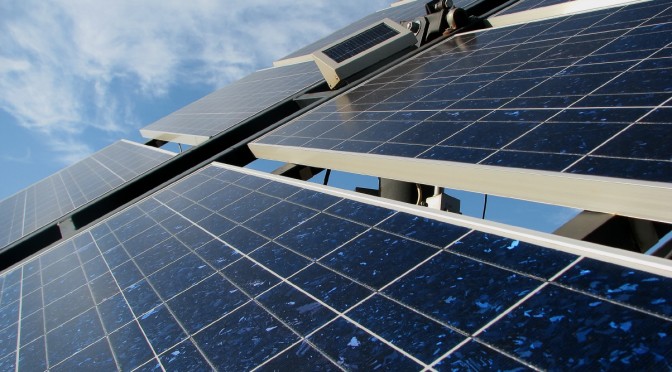China is working on policies, including subsidies and easier access to the grid, to help its ailing solar power producers expand in the domestic market, the China Daily reported on Saturday, citing industry officials and government sources.
The Chinese government will support the connection of photovoltaic solar power producers to the national grid with favorable policies, in a bid to expand the domestic market and help the industry get through tough times, an official has said.
“A document on how State Grid will support China’s PV solar industry has been handed to the central government and is waiting approval,” said Meng Xiangan, deputy director of the China Renewable Energy Society.
State Grid Corp, China’s largest State-owned utility company, is expected to allow local grid companies at city level to approve solar power plants with installed capacities of less than 10,000 kilowatts each to be connected to the grid.
The move is seen as “very encouraging” news by Meng.
State Grid also plans to not charge solar power companies for integration with the grid, which usually costs millions of yuan, and to simplify the process, according to the document.
“The obstacles that companies face in order to be connected to the national grid are the biggest problem for the PV solar power industry, as well as many other new energy industries,” he said. “The new plan will help solve the problem, and it shows the central government’s determination to support the development of the solar industry by solving the grid-connection issue.”
However, he said that it is still hard to predict when the plan will get approved and be in place.
Another senior official at the National Energy Administration, who declined to be named, told China Daily that a group of officials and analysts was formed to specifically work to draw up plans and help guide the country’s solar industry.
China’s export-focused solar panel industry has been hit hard by excess manufacturing capacity and waning foreign demand as European nations cut back subsidies for green power. Companies have slashed prices 30 per cent this year as stockpiles grow, virtually erasing the industry’s profits.
Chinese producers, including Suntech Power Holdings and Trina Solar, are increasingly turning to their home market, which has become one of the world’s biggest, for solar energy development.
Overseas, they battle not only a weak market environment but also anti-dumping tariffs in the United States. Europe also could impose import duties.
Employees carry solar panels at a solar power plant in Aksu, Xinjiang Uyghur Autonomous Region.
The administration will carry out a series of policies to expand the domestic market, enhance industry mergers and reorganizations, and promote innovation.
Last month, the administration announced a plan to develop distributed solar power plants in a large scale, which encourages local governments to propose new solar power projects.
In western areas of the country, where there are rich solar resources, it is especially hard to get connected to the grid.
“Distributed solar power generation will allow the industry to develop, as long as the grid-connection problems can be solved,” Meng said. “That’s why State Grid’s new policy is very important.”
According to the new plan, China’s installed distributed solar power generation capacity will reach 15 gigawatts by the end of 2015, 5 gW more than the target in the 12th Five-Year Plan (2011-15).
Meanwhile, the government is working on a subsidy policy for distributed solar power plants.
The administration plans to offer subsidies ranging from about 0.4 yuan ($0.06) to 0.6 yuan for each kilowatt-hour of distributed solar power. The amount includes subsidies from both the central and local governments.
“The new subsidy policy means that the more electricity the distributed solar power plants generate, the more subsidy the companies will get,” said Meng. “It’s a very helpful measure to further open the domestic market.”
Chinese PV solar companies – which are facing punitive tariffs stemming from anti-dumping and anti-subsidies investigations launched in the United States and Europe – were happy to hear the news.
Colin Yang, vice-president of Trina Solar Ltd, a PV solar company based in China, said that the company is actively working with local partners to develop distributed solar power projects.
“The long-term healthy development of the solar industry depends on its grid parity. We do hope to make it happen through public-private cooperation,” he said.



